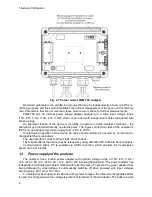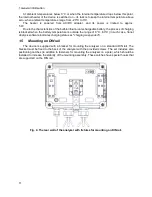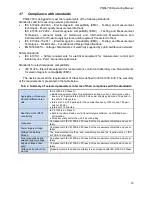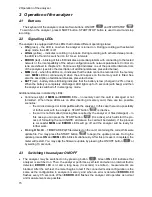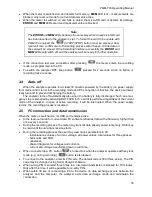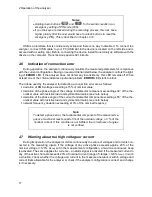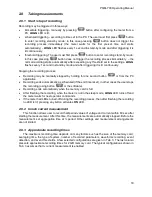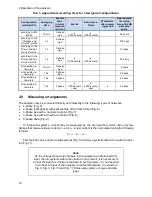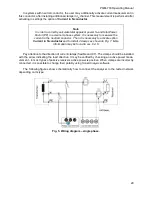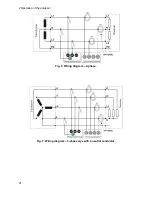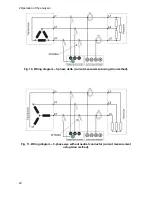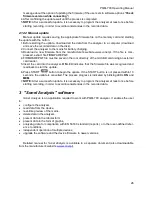
1 General Information
13
Tab. 1. Measured parameters for different network configurations.
Network type,
channel
Parameter
1-
phase
2-phase
3-phase wye with N,
3-phase triangle
3-phase wye without N,
L1/A N L1/A L2/B N
Ʃ L1/A L2/B L3/C N
Ʃ L12/AB L23/BC L31/CA Ʃ
U
RMS voltage
U
DC
Voltage DC
component
I
RMS current
I
DC
Current DC
component
F
Frequency
CF U
Voltage crest
factor
CF I
Current crest
factor
P
Active power
Q
1
, Q
B
Reactive
power
(1)
D, S
N
Distortion
power
S
Apparent
power
PF
Power Factor
cosφ
Displacement
power factor
tgφ
tangent φ Fac-
tor
(1)
THD U
Voltage Total
harmonic dis-
tortion
THD I
Current Total
harmonic dis-
tortion
E
P+
, E
P-
Active energy
(consumed
and supplied)
E
Q1+
, E
Q1-
E
QB+
,
E
QB-
Reactive en-
ergy (con-
sumed and
supplied)
(1)
E
S
Apparent en-
ergy
U
h1
..U
h40
Voltage har-
monic ampli-
tudes
I
h1
..I
h40
Current har-
monic ampli-
tudes
Unbal-
ance U, I
Symmetrical
components
and unbalance
factors
P
st
, P
lt
Flicker factors
Explanations
: L1/A, L2/B, L3/C (L12/AB, L23/BC, L31/CA) indicate subsequent phases
N is a measurement for current channel I
N
,
Ʃ is the total value for the system.
(1)
In 3-wire networks, the total reactive power is calculated as inactive power
𝑁 = √𝑆
𝑒
2
− 𝑃
2
(see discussion on reactive power in section 6.4.3)
Summary of Contents for PQM-700
Page 85: ...85 Notes...









